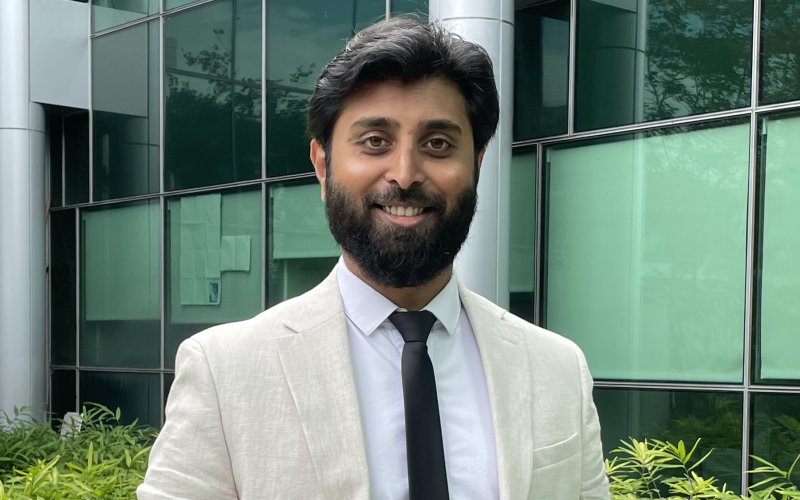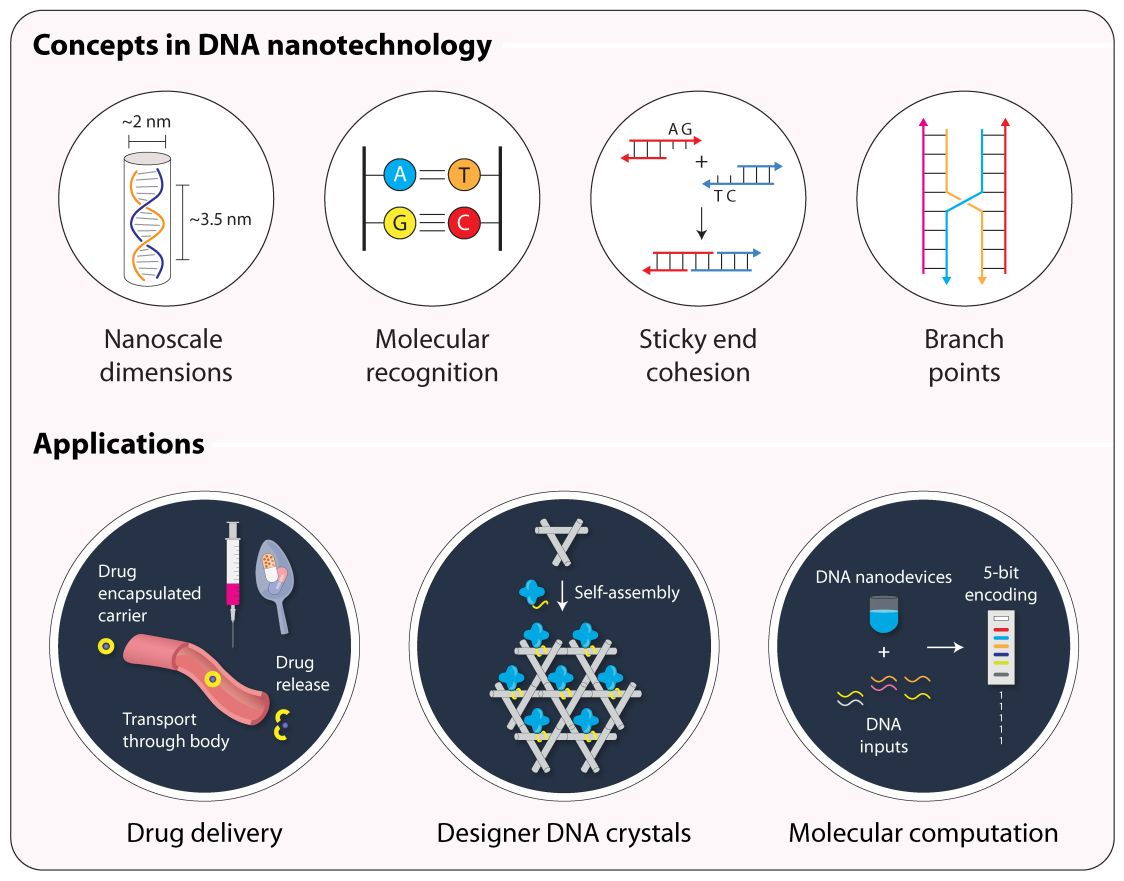RNA Institute Scientist Awarded $1.95 Million to Advance DNA Nanotechnology Research

By Erin Frick
ALBANY, N.Y. (Sept. 28, 2023) — University at Albany’s Arun Richard Chandrasekaran, a senior research scientist at the RNA Institute in the College of Arts and Sciences, has received $1.95 million from the National Institute of General Medical Sciences, a branch of the National Institutes of Health, to support his research exploring ways to exploit DNA nanotechnology for biomedical and materials science applications.
Chandrasekaran’s current research focuses on DNA nanostructures — synthetic molecules made up of the same building blocks as the DNA found in living cells, which can be engineered for a variety of applications including medical diagnostics, drug delivery, structural biology, molecular computation and data storage.
The five-year grant takes the form of a “Maximizing Investigators' Research Award” (MIRA), which is awarded to outstanding early stage investigators and is designed to afford recipients maximum stability and flexibility to promote scientific discovery. Chandrasekaran’s proposed work falls into two main categories: improving drug delivery and developing DNA nanostructures as structural scaffolds.
Delivering drugs via DNA nanostructures
“The first goal of the project is to create a drug delivery platform for treating multisystemic diseases,” Chandrasekaran said. “In this aspect of the work, our goal is to find ways to improve engineered DNA nanostructures to make them more functional for the purpose of drug delivery.”
Chandrasekaran explained that functional improvements could take several different forms including biostability, cellular uptake, targeted delivery and triggered release.
“An important mechanism of drug delivery that we will be looking at is cellular uptake: Can DNA nanostructures help deliver small molecule drugs more efficiently into cells? We are also actively working on improving the biostability of DNA nanostructures so that they survive conditions in the body during drug delivery.
“Another aspect that our group focuses on is the development of chemical strategies to attach or release drugs. The idea is that once the drug reaches the target site in the body, we can use stimuli such as light or a chemical reaction to release the drug at will.”
To explore these mechanisms, Chandrasekaran’s team will design and develop DNA nanostructures that can be programmed to carry different types of drugs such as small molecules, antisense oligonucleotides, small interfering RNAs and peptides.

Rationally designed DNA crystals as biomolecular scaffolds
The second focal area of the proposed work will involve designing DNA nanostructures that can self-assemble into three-dimensional crystals and house biomolecules used in medical applications.
When we think of crystals, we might imagine colorful mineral deposits, snowflakes or even edible crystals like sugar and salt. In the field of crystallography, scientists have developed methods to grow and study crystals made of biomolecules including proteins and DNA. These crystals can then be analyzed to determine the precise characteristics and dimensions of their structure — information that is critical to drug development. Knowing the exact shape of a biomolecule can tell us how drugs will bind to it and what modifications to the drug could strengthen the interaction and improve drug efficacy.
“Much of the process behind growing crystals is currently driven more by chance than by design,” Chandrasekaran said. “It typically works by setting up samples of proteins or DNA suspended in different buffer solutions. Then you wait. If crystals form, then you can go on to analyze and solve the crystal structure of the biomolecule. If crystals do not form, all you can do is try different buffer conditions with different types of metal ions or different salts.
“The aim of my project is to replace that element of chance with rational design. A few research groups including ours have already been able to design specific nanostructures using DNA that can self-assemble into three dimensional crystals. Now that we have these designed crystals, we plan to modify them in a way that would allow us to insert ‘guest molecules’ — for example: antibodies, fluorophores and ligands — that would automatically crystallize when the DNA crystals assemble.”
Chandrasekaran’s lab is also exploring a new method of crystal structure analysis called serial femtosecond X-ray crystallography (SFX), which involves the use of high intensity, X-ray free-electron lasers. SFX improves on prevailing methods by collecting diffraction data from thousands of individual crystals in a stream, eliminating radiation damage to the crystal caused by X-rays during data collection.
“Over the next five years, and certainly well beyond, I'm looking forward to translating what are now conceptual ideas in DNA nanotechnology into practical applications in biomedical science,” Chandrasekaran said. “The field of DNA nanotechnology is relatively new, and many groups are looking into how these nanostructures can be useful in real life. I'm very excited to advance these technologies, such as those that improve drug delivery, to the stage of testing in animal models and eventually the clinic.”
Chandrasekaran received his bachelor of science in zoology from The American College in Madurai, India, his master of technology in nanoscience from the University of Madras, Chennai, India, and his PhD in chemistry from New York University in New York City. He started his independent research laboratory at the RNA Institute at UAlbany in June 2022. In addition to this R35 MIRA award, Chandrasekaran has also received an R03 research grant and a diversity supplement award from the National Institute on Aging in 2022.




